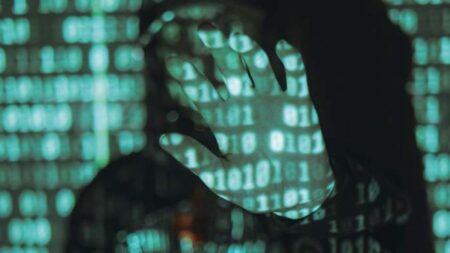Protect your data

Cyber resilience must become a strategic priority, argues Nick O’Donovan, regional director, EMEA, at cybersecurity company Huntress
As cyber criminal activity intensifies, independent schools increasingly find themselves squarely in the line of fire. In fact, they are being viewed as attractive targets due to their housing highly valuable personally identifiable information about pupils, staff and alumni. This includes medical records, pupil names, addresses, birth dates, social security numbers, financial data and other sensitive personal details, all of which can be exploited for identity theft, fraud or extortion.
This data is a goldmine for cyber criminals, who are well aware that the education sector is notorious for having limited cybersecurity resources and training.
Over the past year, cyber threats to the education sector have escalated at an alarming rate, with phishing, malware, ransomware, and weak credentials among the most commonly exploited vulnerabilities.
Last year, cyberattacks on educational institutions rose by a staggering 37%, with the sector overtaking even healthcare and technology in terms of frequency of attacks. According to Huntress’s latest threat report, 21% of all recorded incidents were directed at schools, colleges and universities, a clear indication that the education sector is firmly in the criminals’ cross hairs.
Independent schools in the UK are particularly at risk. Despite their reputations for academic excellence and strong pastoral care, many are finding themselves underprepared for the evolving nature of cyber threats. Sophisticated techniques, once reserved for large corporations, are now being used against smaller, independent institutions, bringing with them the potential for operational disruption, financial loss, and serious breaches of trust.
Safeguarding the digital environment within schools is no longer just a matter for the IT department; it’s also a top priority for school leadership. Independent schools must urgently assess and strengthen their cyber resilience, not only to protect data and infrastructure, but also to uphold their duty of care to pupils, staff and parents.
Understanding escalating cyber threats
Ransomware in particular is proving to be a significant threat to independent schools, capable of halting operations and exposing sensitive data. Alongside this, malware and social engineering attacks are becoming increasingly common, reflecting a sharp rise in both the frequency and sophistication of cyber threats in the sector.
A major vulnerability lies in the IT infrastructure of many schools. A reliance on legacy systems, inconsistent patching, and limited in-house cybersecurity expertise leaves institutions exposed. Attackers are quick to exploit these gaps, often gaining unauthorised access through outdated software or unsupported platforms.
The human element also plays a role. Staff, pupils, and even parents often lack the training to recognise cyber threats such as phishing emails or malicious links. As the use of personal devices and remote access grows, so too does the potential for security breaches, widening the attack surface and complicating efforts to protect school systems effectively.
Most common cyber threats
From sophisticated malware to deceptive phishing tactics, attackers exploit both technical weaknesses and human error to gain access to valuable data. One of the most widespread threats last year was malicious scripts, accounting for 24% of attacks on educational institutions. These allow attackers to embed harmful code within systems without detection, often leading to severe operational and data breaches.
Malware and infostealers follow closely behind, responsible for 16% and 13% of attacks, respectively. These common threats are designed to steal login credentials, financial details, and other valuable information from staff and pupils. Once stolen, credentials can be sold online or used to launch further targeted attacks.
Perhaps the most disruptive threat is ransomware, malicious software that locks access to vital files and demands payment for their release. With limited internal IT resources, many schools are particularly vulnerable to this kind of extortion.
A more recent and concerning trend is the abuse of remote monitoring and management tools. Often used by IT teams to manage school systems remotely, these platforms can also be hijacked by attackers to maintain long-term access and operate undetected.
Phishing and social engineering attacks remain prevalent, with staff and pupils receiving deceptive emails or messages designed to steal credentials or trigger malware downloads. These attacks rely heavily on a lack of cybersecurity awareness within the school community.
Compounding the issue is the reliance on third-party software, often with inadequate security measures, and the rise of hybrid learning, which has dramatically expanded the number of devices and networks in use, increasing the overall attack surface.
Strengthening cybersecurity
Independent schools must take proactive steps to strengthen their cybersecurity defences in response to the increasing risk of cyberattacks. Security awareness training is one of the most effective measures. Educating staff and pupils on recognising phishing attempts, using strong passwords, and practising safe online behaviour can significantly reduce the risk of breaches caused by human error.
Investing in tools like endpoint detection and response (EDR) is also essential. These systems detect and protect endpoints such as virtual private networks and remote access points in real-time, helping prevent attackers from gaining a foothold. For schools with limited in-house IT resources, partnering with a regional managed service provider (MSP) offers solutions that are hands-off for overstretched IT and security teams, or for institutions with no in-house resources at all. MSPs provide round-the-clock monitoring, incident response, and expert threat detection, relieving pressure on internal teams while improving overall protection.
Finally, schools should have a clear incident response plan in place. Regular vulnerability assessments, drills, and secure backups ensure they are prepared to recover quickly from any cyber incident.
By combining training, technology, and expert support, independent schools can build a stronger, more resilient defence against today’s evolving cyber threats.
Looking forward
The education sector has become one of the most attractive targets for cybercriminals, with attacks increasing in both volume and sophistication. Independent schools must recognise the urgent need to bolster their cybersecurity posture. By investing in security awareness training, deploying advanced security solutions, and working with managed service providers, educational institutions can significantly reduce their risk exposure.
With the stakes higher than ever, a proactive and comprehensive cybersecurity strategy is no longer optional; it is essential to safeguarding the future of education in an increasingly digital world.

Nick O’Donovan
